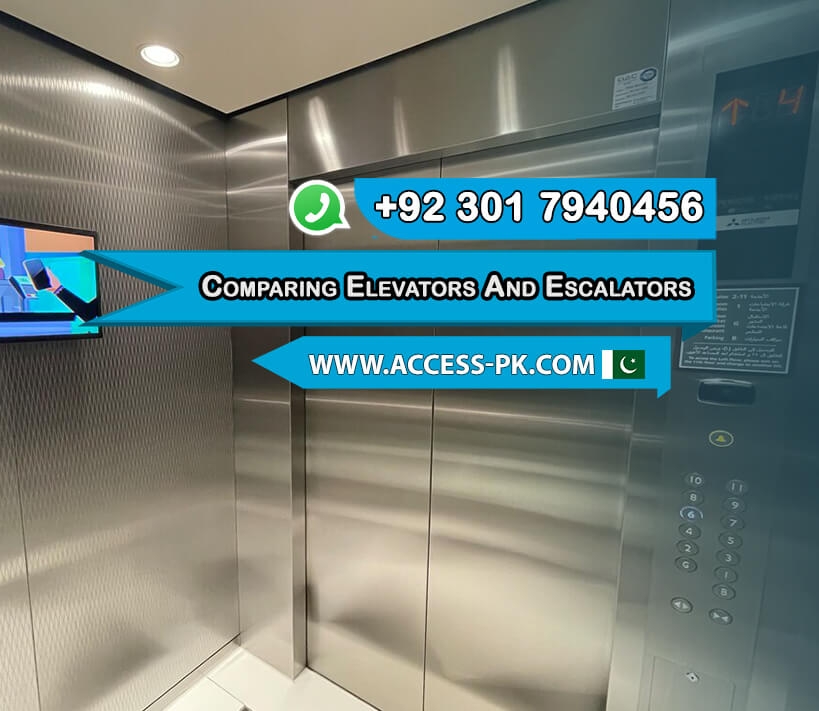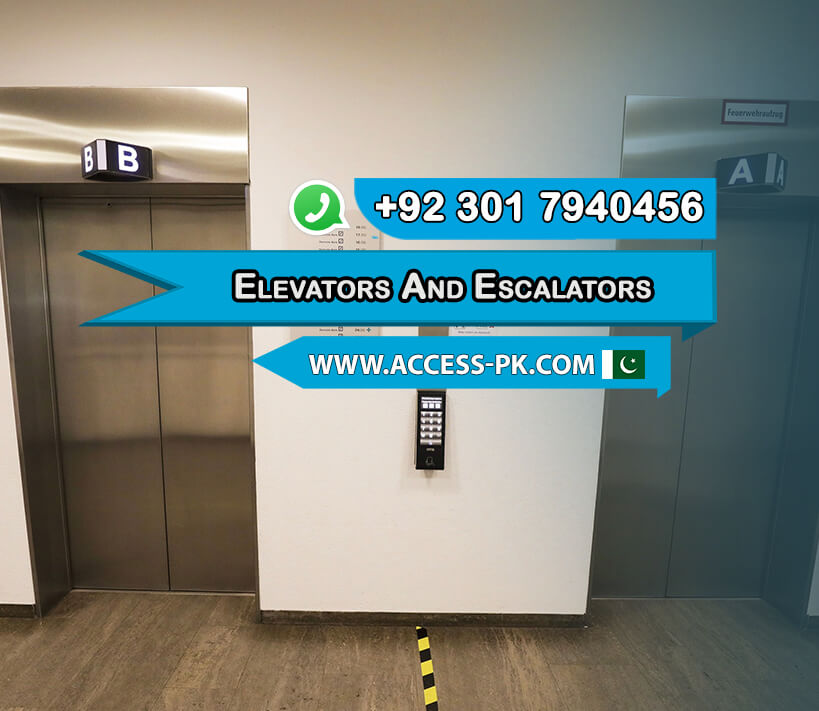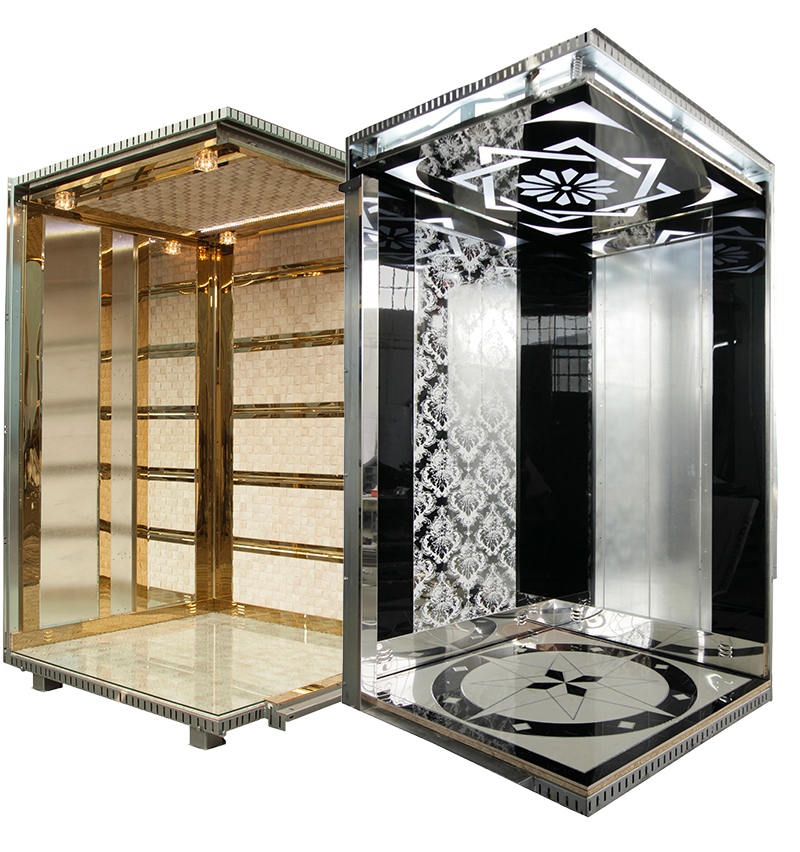Elevator vs Escalator serve distinct functions in building transportation systems. Access Technologies, owned by Imran Rafi, provides comprehensive solutions for both, ensuring efficient movement in multi-story structures. Elevators are enclosed platforms that move vertically between floors, operated by a system of pulleys, counterweights, and motors. They are ideal for transporting individuals and goods over various levels, especially when space is limited. In contrast, escalators are moving staircases that transport people up and down in a continuous loop, making them suitable for high-traffic areas where quick and easy access is needed.
Understanding how elevators and escalators work helps in choosing the right system for your needs. Elevators operate by moving a cab within a shaft, powered by an electric motor and driven by a pulley system. This allows for vertical travel between multiple floors with precise stops. Escalators, however, use a chain-driven system to move steps continuously along a track. This system is effective for handling large volumes of foot traffic efficiently. Both systems are crucial in modern buildings, but their applications differ based on the specific requirements of the structure.
When deciding between an elevator and an escalator, consider factors such as traffic volume, space availability, and user needs. Elevator vs Escalator offer the advantage of accessibility for all users, including those with disabilities, and can handle larger items. Escalators are typically more suitable for areas with high pedestrian flow, providing a steady and rapid means of transport. Ultimately, your choice will depend on balancing these factors to ensure the most effective solution for your building’s design and usage requirements.
Get Free QuotesUnderstanding Elevators: Definition and Basic Functionality

Elevators are essential vertical transportation systems used to move people and goods between different floors of a building. Unlike escalators, which move continuously in a loop, elevators operate in a dedicated shaft and provide a controlled environment. Elevators come in types like hydraulic, traction, and machine-room-less (MRL), each tailored to specific needs and building requirements. Elevators function through a combination of mechanical and electrical components, including motors, pulleys, cables, and control systems. They ensure safe and efficient travel between floors, making them indispensable in both residential and commercial buildings. By providing reliable and accessible transportation, elevators enhance convenience and functionality within multi-story structures.
What Is an Elevator?
An elevator is a vertical transportation system designed to move people and goods between different floors of a building. Unlike escalators, which continuously transport passengers up and down, elevators operate within a shaft and provide a contained, controlled environment. They come in various types, including hydraulic, traction, and machine-room-less (MRL) elevators, each tailored to different needs and building designs. Elevator vs Escalator are essential in both commercial and residential buildings, ensuring accessibility and convenience. Their ability to transport items and people efficiently makes them a critical component in multi-story structures.
Key Components of an Elevator
Elevators consist of several key components that work together to ensure smooth and safe operation. The primary elements include the elevator car, which carries passengers; the hoistway or shaft, which guides the car vertically; and the mechanical system, including pulleys, motors, and cables. Additionally, the control system manages the car’s movement and stopping at various floors. Safety features, such as emergency brakes and alarms, are also integral to the elevator’s design, ensuring user safety and system reliability. Each component plays a crucial role in the overall functionality of the elevator.
How Elevators Operate
Elevators operate through a combination of mechanical and electrical systems. The basic operation involves a motor that drives a system of pulleys and cables to lift and lower the elevator car within the shaft. In hydraulic elevators, a piston moves the car up and down using fluid pressure. Traction elevators use a counterweight system to balance the load and reduce energy consumption. The control system coordinates the elevator’s movements, responding to user commands and ensuring precise stops at each floor. This combination of mechanisms and controls allows elevators to provide efficient, reliable vertical transportation, distinguishing them from escalators in their functionality.
Get Free QuotesEscalators Explained: Structure and Operation

Escalators are mechanical systems designed for moving people up and down between different levels of a building or structure. They consist of a continuous loop of steps that travel along a fixed track. The structure of an escalator includes the step chains, handrails, and a motor-driven system that ensures the steps move smoothly. The motor, located at the base of the escalator, drives the step chains and rotates the steps, allowing them to ascend or descend in a steady flow. Safety features such as step brushes and sensors prevent accidents by ensuring smooth transitions and detecting obstacles. Escalators are commonly used in high-traffic areas such as shopping malls, airports, and train stations, where they facilitate efficient pedestrian movement.
| Elevator Type | Cost |
|---|---|
| Stair lifts | 810000 to 1770000/Pkr |
| Home Lifts | 1200000 to 2000000/Pkr |
| DIY Food Elevator | 2230000 to 3350000/Pkr |
| Two-Story Home Lift | 7020000 to 8420000/Pkr |
| Hospital Bed Elevators | 4150000 to 8300000/Pkr |
| Panoramic Elevator | 3180000 to 3870000/Pkr |
The operation of escalators is relatively straightforward but involves several critical components working together. As the motor drives the step chains, the steps move in a loop, with the steps rising on one side and descending on the other. This movement creates a continuous flow of steps, allowing passengers to board and disembark easily. The escalator’s speed is regulated to ensure safety and comfort, typically ranging between 0.5 to 0.75 meters per second. Additionally, escalators are equipped with various control systems to manage their operation, including sensors that adjust the speed based on passenger flow and safety mechanisms that halt the escalator in case of malfunction or obstruction.
Get Free QuotesComparing Elevators and Escalators: Key Differences and Applications

When comparing elevators and escalators, several key differences highlight their distinct applications and uses. Elevators are enclosed systems designed for vertical transport within a building. They are suitable for handling large volumes of passengers and goods and are particularly effective in providing accessibility for individuals with disabilities or mobility issues. Elevators can travel between multiple floors, offering precise stops and the ability to carry bulky items. In contrast, escalators are open-step systems designed primarily for moving people between two or more levels in a continuous loop. They are ideal for high-traffic areas where rapid and efficient pedestrian movement is needed, such as shopping centers and transit hubs. Unlike elevators, escalators do not provide enclosed compartments and are generally not suited for transporting large or heavy items.
The choice between an elevator and an escalator depends on the specific needs and layout of a building. Elevators offer versatility and accessibility, making them suitable for a wide range of applications, including residential buildings, offices, and hospitals. They provide a controlled environment for users and are essential in multi-story buildings where vertical transportation of various types of cargo is required. Escalators, on the other hand, excel in high-traffic environments where continuous movement is necessary. They are often used in public spaces where quick and efficient access between different levels is required. Both systems play crucial roles in enhancing the functionality and accessibility of buildings, with their specific advantages making them suited to different scenarios in the Elevator vs Escalator debate.
Get Free QuotesChoosing Between Elevators and Escalators: Factors to Consider for Your Building

Choosing between elevators and escalators requires evaluating key factors to find the best fit. Building Size and Layout are crucial; elevators are ideal for tall or space-limited buildings, operating within a shaft for efficient vertical transport. In contrast, escalators suit larger, open areas, such as malls or airports, where continuous movement is required. Traffic Flow and Capacity Needs are also essential considerations. Elevators can handle varying passenger volumes and bulky items, making them suitable for offices, hospitals, or residential buildings.
Building Size and Layout
When deciding between an elevator and an escalator for your building, several key factors must be considered to make the right choice. Building Size and Layout significantly influence this decision. Elevators are ideal for taller buildings or those with limited space for movement, as they operate within a dedicated shaft and offer vertical transportation across multiple floors. They are essential in structures where space is constrained, providing efficient and accessible travel. In contrast, escalators are better suited for larger, open spaces, such as shopping malls or transit stations, where they can handle continuous foot traffic without requiring a separate shaft.
Traffic Flow and Capacity Needs
Traffic Flow and Capacity Needs also play a crucial role. Elevators are versatile and can accommodate varying volumes of passengers and goods, making them suitable for diverse environments such as offices, hospitals, or residential buildings. They provide precise stops and controlled movement, essential for buildings with fluctuating traffic patterns. Escalators excel in high-traffic areas, facilitating quick and steady movement of people between levels. They are designed to handle a continuous flow of pedestrians, making them ideal for public spaces where rapid transport is necessary.
Maintenance and Operating Costs
Maintenance and Operating Costs must also be evaluated. Elevators generally require more frequent maintenance due to their complex mechanical systems, including motors and pulleys, which necessitates regular inspections and repairs. The costs can vary based on the type and usage of the elevator. Escalators, while typically having lower maintenance needs, involve higher operating costs due to their continuous movement and energy consumption. Balancing these costs with the benefits of each system is essential in the Elevator vs Escalator decision, ensuring a choice that aligns with both functional and budgetary considerations.
Get Free Quotes



